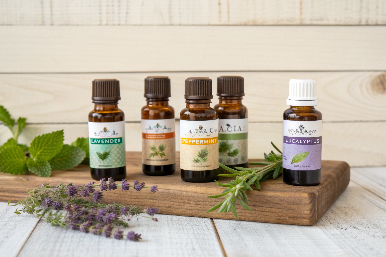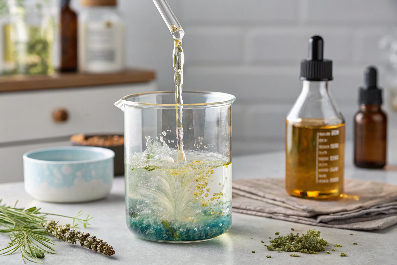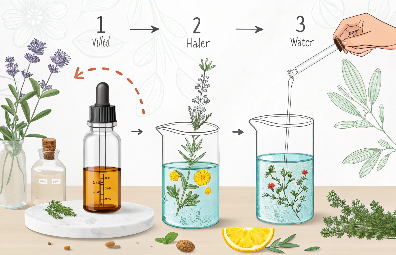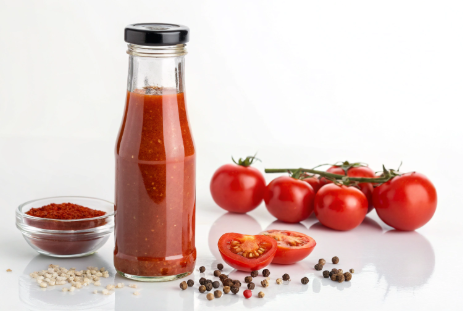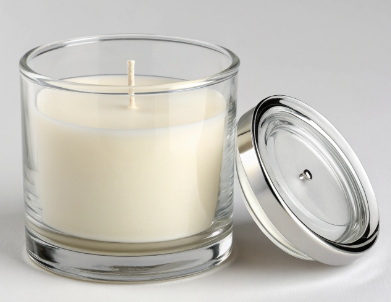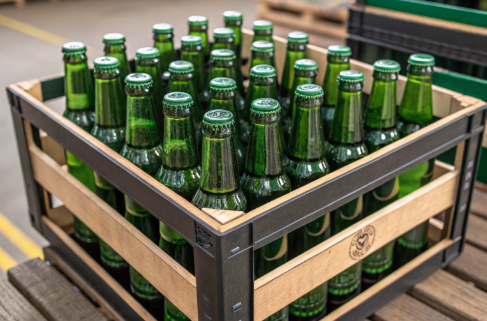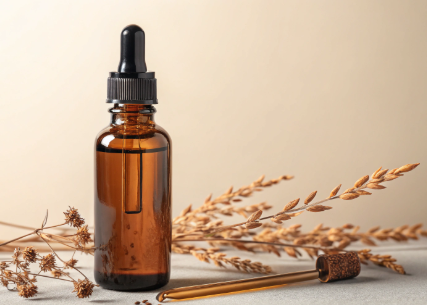Essential oils are powerful—but without proper dilution, they can irritate skin or underperform in diffusers and sprays.
To dilute essential oils with water, combine them using an emulsifier like witch hazel or alcohol, as oil and water alone don’t mix well. Typical dilution is 5–15 drops per 100ml water.
At PauPack, we help brands formulate water-based applications—like facial mists and room sprays—that deliver both safety and scent. Let’s walk through the right ratios, blending strategies, and packaging essentials to get it right every time.
How Do You Mix Essential Oils with Water?
Water and oil don’t like each other—but you can help them get along.
You mix essential oils with water by adding an emulsifier to bind them together. Without one, the oils float on top and won't disperse properly.
Step-by-Step:
-
Add Emulsifier First
-
Use witch hazel, vodka, or polysorbate 20 to act as a binding agent.
-
-
Mix in Essential Oils
-
Add drops of essential oil to the emulsifier and shake well.
-
-
Combine with Water
-
Use distilled or filtered water to avoid bacteria and mineral interference.
-
Example (for 100ml room spray):
-
10 drops lavender essential oil
-
1 teaspoon witch hazel
-
95ml distilled water
At PauPack, we often recommend using our fine-mist spray bottles (30ml to 100ml) for these blends. Our no-leak atomizers ensure even misting and long shelf-life without clogging.
What Is the Best Way to Dilute Essential Oils?
You can’t just add oils to water and hope for the best—dilution is a science.
The best way to dilute essential oils is by matching dilution level to use case, and using an appropriate carrier (water, oil, or alcohol) with mixing support.
Best Practices by Application:
| Application | Carrier Medium | Dilution Ratio | Notes |
|---|---|---|---|
| Facial Mist | Distilled water + witch hazel | 1% (5–6 drops/100ml) | Always use preservative if storing |
| Room Spray | Distilled water + vodka | 2–3% (10–15 drops/100ml) | Shake before each use |
| Body Spray | Aloe water + essential oil | 1–2% (5–10 drops/100ml) | Patch test first |
| Hair Mist | Rose water + essential oil | 0.5–1% (3–5 drops/100ml) | Use fine sprayer |
When producing in bulk, we recommend customers pair our amber PET spray bottles or frosted glass misters with their blends to block light and enhance shelf stability.
What Is the Ratio of Essential Oils to Water?
Ratios matter—get it wrong, and you risk skin burns or wasted product.
The standard essential oil-to-water ratio is 1–3% for most topical and spray applications, which equals 5–15 drops per 100ml water.
General Guidelines:
-
Light scent / face-safe: 0.5–1% = 3–6 drops per 100ml
-
Room fragrance: 2–3% = 10–15 drops per 100ml
-
Therapeutic blend (short-term use): 5% = 25 drops per 100ml
| Water Volume | 1% EO (Light) | 2% EO (Medium) | 3% EO (Strong) |
|---|---|---|---|
| 30ml | 6 drops | 12 drops | 18 drops |
| 50ml | 10 drops | 20 drops | 30 drops |
| 100ml | 20 drops | 40 drops | 60 drops |
⚠️ Always shake before each use. Without a permanent emulsifier, essential oils will rise to the surface over time.
At PauPack, our fine-mist sprayers include pressure-tested seals and consistent misting nozzles, preventing clogging even with higher essential oil concentrations. This is critical when launching spray-based SKUs across global markets.
What Is the 30 50 20 Rule for Essential Oils?
A great spray smells great from start to finish—and this rule is how it’s done.
The 30/50/20 rule means you structure your blend with 30% top notes, 50% middle notes, and 20% base notes for balanced scent release and longevity.
Example: Calming Mist (20 Drops)
-
Top Notes (30%): 6 drops Bergamot
-
Middle Notes (50%): 10 drops Lavender
-
Base Notes (20%): 4 drops Vetiver
Even when diluted in water, this structure helps the scent evolve over time—starting bright, moving soft, and finishing warm. That’s why we recommend this rule to clients launching functional mists for sleep, focus, or stress relief.
By using structured blend logic + precise dilution + UV-blocking packaging, you ensure your product performs as expected—from first spray to last drop.
Conclusion
Water and oil don’t mix—unless you do it with purpose. At PauPack, we support brands with tested dilution ratios, premium atomizers, and blend consultation to make every spray safe, stable, and stunning.




